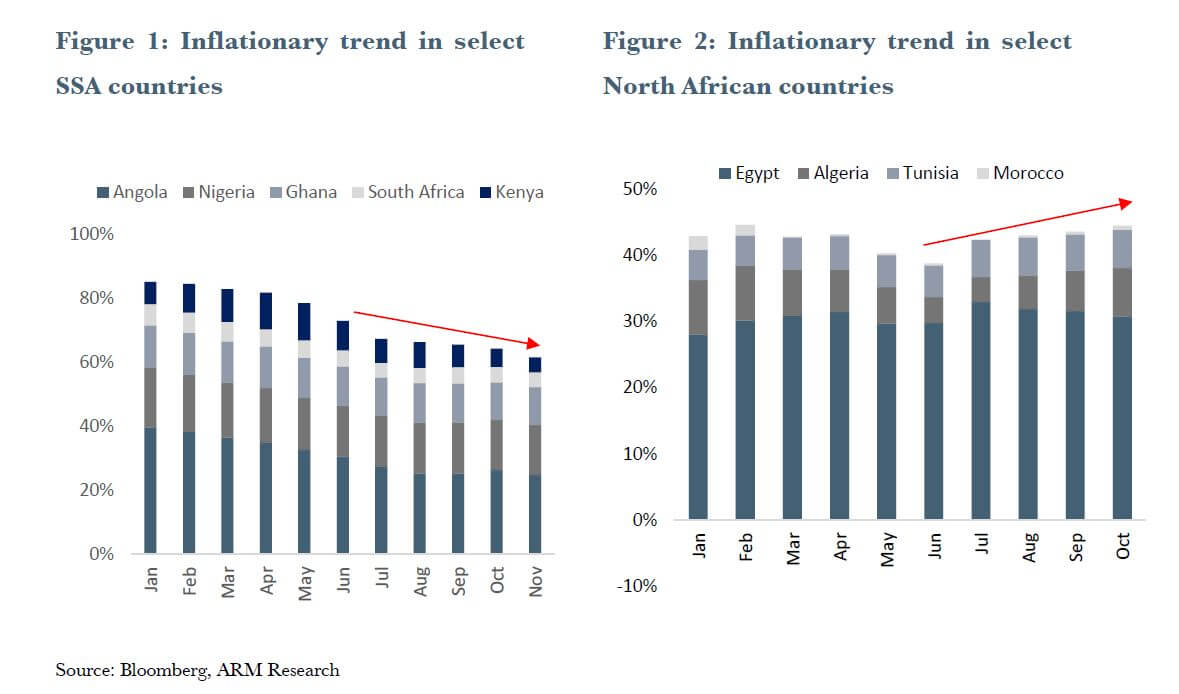Given recently released data and estimates, Africa’s economy is back from the brink and on course for a modest recovery in 2017 as higher global commodity prices supported growth in Sub-Saharan Africa (SSA) while fiscal consolidation was responsible for the modest growth seen in the North. Specifically, after increasing at its slowest pace in 2 decades in 2016 (+1.4% YoY), IMF estimates SSA growth at 2.6% YoY following strong rebound in Nigeria, South Africa (SA) and Angola.
Whilst higher crude production and prices propelled oil sector growth in the two largest oil exporting nations in Africa, the impact of receding drought drove improved performance of the agricultural sector which in turn supported growth in SA. Elsewhere, fiscal consolidations and reforms appears to be yielding fruit in North Africa with sharp recoveries seen in Egypt and Morocco as cut down in energy subsidies and a reduced public wage bill supported foreign investment in the former.
SSA growth rides on commodity prices
The central theme across SSA was the rebound from the trough of 2016 on the back of higher commodity prices and production, favourable external conditions, as well as robust agriculture output. Major economies of Nigeria and SA, pulled out of recession even as Angola and Ghana sustained growth. The positive picture in the countries neutered slower growth across East Africa underpinned by politics-induced pullback as well as drought.
For context, Nigeria’s economy reverted to growth for the second consecutive quarter in Q3 2017 (+1.4% YoY, Q2: +0.7% YoY) largely hinged on recovery in crude oil production, resilience in the agriculture sector as well as improved external balance. Elsewhere, despite political uncertainty and fiscal challenges in SA prompting credit downgrade to junk status, SA’s economy showed fortitude, expanding by 0.8% YoY in Q3 17. The growth was supported by recovery in the agricultural sector (+19.6% YoY)—a fall-out of receding drought in the region. Furthermore, expansion in mining and quarrying sector (+3.2% YoY ) further supported growth.
Elsewhere, the combined impact of higher crude oil prices and production supported growth in Angola and Ghana even as receding political tensions in the former, following the election of the new president in the period, supported the growth picture. Accordingly, growth in Angola and Ghana printed at 1.3% and 9.3% YoY accordingly. On the downside, the impact of prolonged political crisis and adverse weather conditions on investment, external indicators and agriculture sector slowed down growth in Kenya. For context, Q3 2017 GDP growth of 4.4% YoY— slowest expansion in sixteen quarters— reflected sharp moderation in key sectors – Finance and Insurance, Manufacturing, Construction, and Agriculture.


